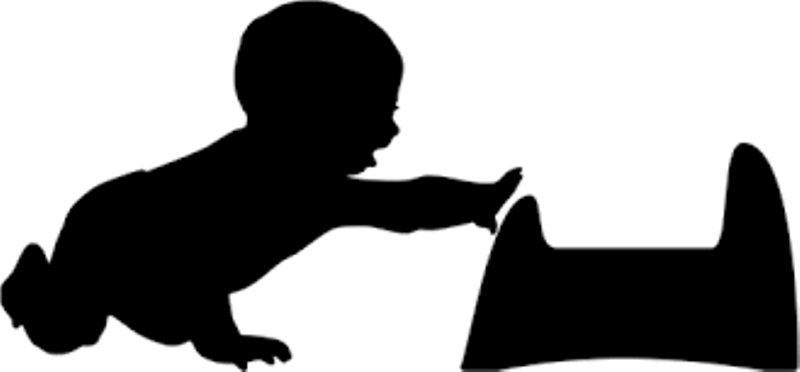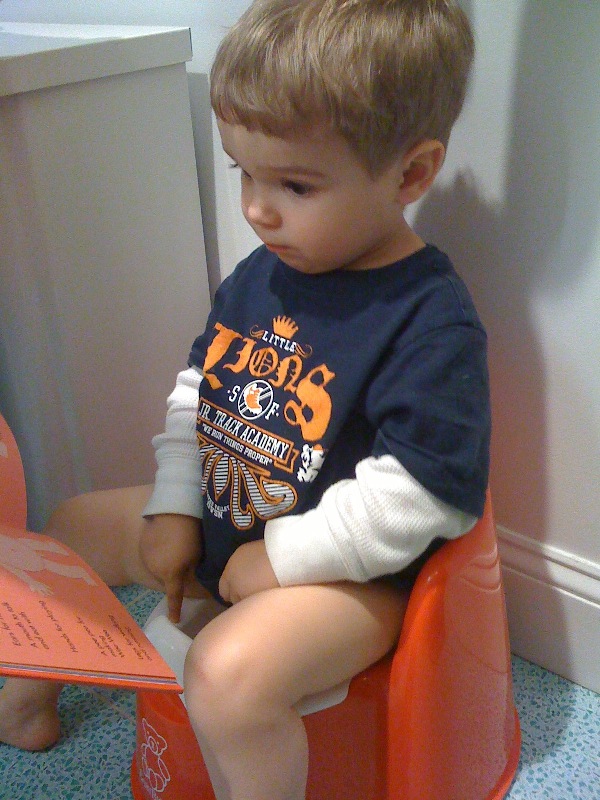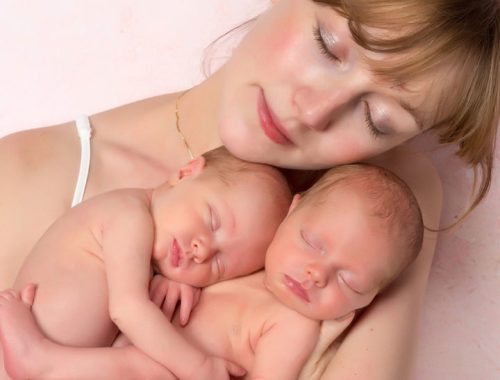
How to Potty Train Your Baby
Contents
– Step 1: Determine the right time to potty train your child
– Step 2: Create a potty-training environment
– Step 3: Adopt a potty training attitude
– Step 4: How do you dress your baby for potty training?
Potty training is not something you can teach your child; it’s a skill that he learns.
However, the parent or caregiver has a role to play in helping your child develop potty training when he is ready, trusting the child, providing an appropriate environment, and not letting the sensitive period pass.
Here’s how to potty train your baby.
1. Determine the right time to potty train your child
Is your child ready to be potty trained? Here’s what you need to know:
– A child under 18 months of age cannot control his sphincters. His nervous system is not ready.
– It has often been said that a child who can walk up and down the stairs by himself is capable of being potty trained. Experience and research show that this is not entirely true.
– Being potty trained is not only a question of physical ability; it also depends on the child’s well-being, the progress of his other acquisitions, and the environment in which he evolves. A child who develops language firmly may be ready later to be clean: he cannot always do everything simultaneously. A child with psychological difficulties may evolve differently.
– Some children are potty trained by day and night at 18 months, but this is rare. Children are often toilet trained during the day before they are toilet trained at night.
– Potty training may coincide with kindergarten entry. Many parents are stressed, seeing that the first day of school is approaching and their toddler is still in diapers. Experience proves that the process can go very quickly when the child is over 2 ½ years old. Also, if the school asks that children not wear diapers anymore, teachers always tolerate “accidents”: just put one or two changes in the child’s backpack.
Note: On average, children are out of diapers by 26 months, and 95% of children are out of disposable diapers by age 2.5 (UK Environmental Agency, 2005b). In addition, it is estimated that children are clean at night on average by 33 months of age (Green, 1998 cited in UK Environmental Agency, 2005a).
2. Create a potty training environment for your baby
Let your baby understand how potty training works.
– If it’s not taboo in your home, leave the toilet open, so the toddler knows how other children and adults pee.
– Explain that urine and feces are waste products that the body gets rid of to stay healthy.
Offer different solutions: potty, toilet, etc.
– Leave a potty within reach so they can make it their own.
– Some children don’t like potties and are comfortable on toilet seats with a small carbuncle.
– Many boys don’t like to pee on the potty but prefer to pee standing up over the toilet like men.
– Some little boys learn to potty train by peeing in the yard with their daddy. Plus, it’s great for the grass.
Note: By age 2 1/2, about 90% of girls and 75% of boys have bladder control.
Stop changing him like a baby.
Don’t change your baby lying down, but instead standing up and letting him intervene: he/she can progressively develop his autonomy in terms of cleanliness by taking off his diaper, wetting his/her washcloth, washing himself with his/her washcloth, participating in his undressing and re-dressing… It should be a game and a way to become independent, not a constraint! This is how he will progressively gain confidence and feel that he impacts his cleanliness.
At home, nothing beats a washcloth, water, and mild soap. Take the opportunity to ban wipes except when you are in a place where water is not accessible. They are polluting and often allergenic. You can easily make children’s washcloths by cutting up an adult washcloth or a small piece of towel. To make a child’s washcloth out of an adult’s glove, cut it to the size of your toddler’s hand to reduce the length, then the width. Two small handmade seams will suffice.
3. Adopt an attitude that promotes your child’s cleanliness

– If your child tells you (by his attitude or words if he is already talking) that he doesn’t want to put on a diaper, let him do it.
Good to know: all children go through sensitive periods during which learning occurs in joy and simplicity. After this sensitive period, learning becomes much more laborious and difficult.
– Remember that it will come: all children who have learned to walk are clean at some point, day or night. Before learning is complete, the child goes through different stages that are not always visible.
You may have observed this with walking: the child’s attempts at walking look like they are almost there, and eventually, it will take some time before the baby becomes a toddler capable of standing. The same is true for potty training. Some toddlers start going to the potty early and are potty trained years later. Others discover the potty around 2 ½ years old and are potty trained within a few days.
– If you are anxious about your child being potty trained, you may be worrying unnecessarily, scaring him, or making him think he can’t do it.
– Never compare him to others: each child, each person has his rhythm and development. By comparing him to the neighbor or the 18-month-old niece, you put unnecessary pressure on yourself and him. You are also making him believe that he is not capable, that you do not have confidence in him, which will slow down his learning and the expression of his potential in other areas.
Trust him
– Don’t overdo it: promising gifts if he wins, raving about the pee or poo in the potty, telling him he’s going to grow up (which he may not want to do as much as you think), putting him on the potty a lot, worrying too much about his desire to go on the potty, all of these things are unlikely to work and will take a lot of unnecessary effort compared to the results you’ll get.
– It’s much more effective to read a few fun books about pot (but not too many, and not just that), let him do it, and trust him.
– Also, your toddler may wonder if the poop that comes out is a part of him and may become anxious if you spend time looking at his output.
– Tell her when one of the family members will pee and offer to do the same.
– Suggest that they go pee occasionally, but don’t force them to do it too often.
– Never stop your child from drinking because you’re afraid he’ll pee his pants
– Never scold him for a potty training issue: your child will be ashamed, he will think that you don’t love him anymore, and he will lose confidence in himself. On the other hand, he can participate in the repair: you can gently say to him, “you have peed in your panties, it is not serious, do you want to put your panties and your clothes in the dirty laundry basket? And I’ll show you how to use the mop, so next time you can try to do it yourself”. If you express this gently and without resenting it, it will be an opportunity for your child to develop independence when it comes to potty training.
– Be aware that a potty-trained child may pee or poop on himself if he is stressed, laughing, preoccupied, very focused on an activity… And it doesn’t mean that he has lost his skills.
Children should always have access to the toilet; the fact that they can not go out to school is detrimental to the acquisition of cleanliness and other faculties, even intellectual, and can be a source of urinary infections. If your child is prevented from going to school as they need to, don’t hesitate to talk to the teacher or the educational team.
Children are always trying to please their parents. They only become rebellious when parents or caregivers put them in a situation of domination or power struggle. All recent research shows that children are naturally empathetic and want to do the right thing, that power relations are not natural but acquired through education.
4. How to dress your baby so that he becomes clean?
– In summer, leave him in a T-shirt, with his buttocks exposed as much as possible: this way, he will become aware of how his body works.
– In all circumstances, offer him clothes that are easy to take off and put back on, for example, leggings (without wearing panties at first, so it’s even easier) or jogging pants or pajamas.
– Some children learn well with training layers that they can remove, like panties when a toilet or potty is accessible. Others feel so comfortable in a diaper that it does them no good.
– When going out, take a change of clothes and towels to put on the car seat in case of an accident rather than putting a diaper back on.
– It’s up to you to decide if you’re okay with your toddler putting on a diaper on a day when they’re feeling insecure if they ask you to. In this case, it’s not harmful. On the other hand, don’t put a diaper back on him on your initiative, just because he peed on himself the day before.
– On the plane, on the train, you can use training diapers by explaining the situation well: the toilets are not very accessible, they are narrow, and it is only for that that you propose him training diapers.
You May Also Like

How to Deal With an Angry Child
2022-05-05
Taking Care of Twins Doesn’t Have to Be Difficult
2021-12-15


One Comment
Pingback: